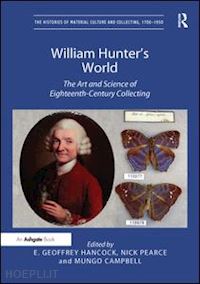Contents: Foreword, David Gaimster; Introduction, Mungo Campbell. Part I William Hunter: Developing his Museum: The Great Windmill Street Anatomy School and Museum, Helen McCormack; Anatomy and the ’museum oeconomy’: William and John Hunter as collectors, Simon Chaplin. Part II William Hunter: Anatomy in Practice: William Hunter’s sources of pathological and anatomical specimens, with particular reference to obstetric subjects, Stuart W. McDonald and John W. Faithfull; ’An universal language’: William Hunter and the production of The Anatomy of the Human Gravid Uterus, Caroline Grigson; The anatomist and the artists: Hunter’s involvement, Anne Dulau Beveridge; William Hunter’s anatomical and pathological specimens, Stuart W. McDonald. Part III William Hunter: Collector: Animal specimens in William Hunter’s anatomical collection, Stuart W. McDonald and Margaret Reilly; William Hunter’s zoological collections, Margaret Reilly; The shaping role of Johann Christian Fabricius: William Hunter’s insect collection and entomology in 18th-century London, E. Geoffrey Hancock; Dr John Fothergill: significant donor, Starr Douglas; The mineral collection of William Hunter: assembly and function, John W. Faithfull; A collection without a catalogue: Captain John Laskey and the missing vertebrate fossils from the collection of William Hunter, Jeff Liston; Archaeological objects in William Hunter’s collection, Sally-Anne Coupar; William Hunter’s parade shield: a memento of Leonardo’s Milan?, Martin Kemp; Ethnographic treasures in the Hunterian from Cook’s voyages, Adrienne L. Kaeppler; ’At last in Dr Hunter’s library’: William Hunter’s Chinese collections, Nick Pearce; William Hunter’s numismatic books, Donal Bateson; The ’Hunterian orchard’: William Hunter’s library, David Weston. Part IV William Hunter: The Wider World: On the way to the museum: Frederich The Great’s Bildergalerie in the park of Sanssouci in the context of other paint











